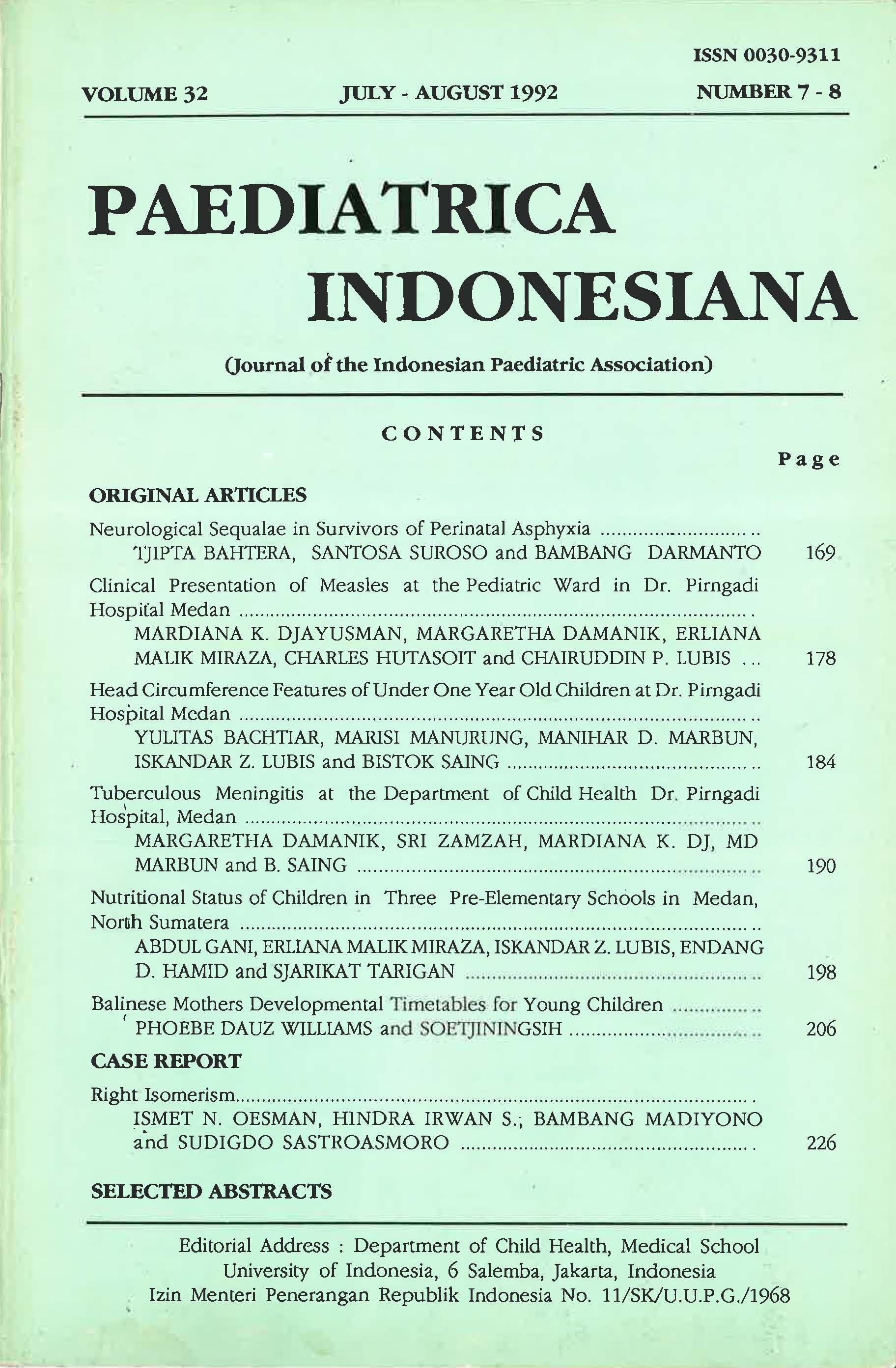Nutritional Status of Children in Three Pre-elementary Schools in Medan, North Sumatera Abstract
Abstract
Anthropometric measurements have been taken on 162 children of Methodist, Dharma Wanita USU and Aisyiah pre-elementary schools in Medan to assess their nutritional status. This study was done cross sectionally from january to February 1990.
The nutritional status of those children were then compared among those schools with the assumption that father's income and educational level of mothers were different. By the parameters of W!A, HI A. q.nd WIH it showed that the nutritional status of children in the pre-elementary schools were generally quite good. Using parameters W/A and W/H there was a significant difference between the children in Methodist and in Aisyiah (p <0.001).
University graduated mothers could be found in Dharma Wan ita USU, whereas in Methodist and Aisyiah pre-elementary schools the mothers were mostly secondary high school graduates.
Father's income above Rp. 150.000,- could be found in Methodist pre-elementary school subsequently followed by Dharma Wanita USU pre-elementary schools, whereas in A isyiah pre-elementary school the father's income was mostly between Rp. 100.000,and Rp. 149.999,-.
By using the Water/ow classification we found 9.88% children with acute Protein Calorie Malnutrition, whereas chronic Protein Calorie Malnutrition only 2.46%. The nutritional status of children in the three pre-elementary schools could be concluded as good.
References
2. Enoch M. Tinggi badan pada umur tertentu sebagai indikator gizi dan kesehatan masyarakat. Medika 1988 ; 7 : 672 - 7.
3. Jahari AB. Antropometri sebagai indicator status gizi. Gizi Indonesia 1988 ; 13 : 23 - 30.
4. Waterlow JC. Nutritional Effects on Growth. Clin Nutr Young child 1985 : 59 - 65.
5. PUSLITBANG Gizi. Permasalahan gizi di Indonesia dewasa ini. Gizi Indonesia 1988 ; 13 : 49- 81.
Copyright (c) 2019 Abdul Gani, Erliana Malik Miraza, Iskandar Z. Lubis, Endang D. Hamid, Sjarjikat Tarigan

This work is licensed under a Creative Commons Attribution-NonCommercial-ShareAlike 4.0 International License.
Authors who publish with this journal agree to the following terms:
Authors retain copyright and grant the journal right of first publication with the work simultaneously licensed under a Creative Commons Attribution License that allows others to share the work with an acknowledgement of the work's authorship and initial publication in this journal.
Authors are able to enter into separate, additional contractual arrangements for the non-exclusive distribution of the journal's published version of the work (e.g., post it to an institutional repository or publish it in a book), with an acknowledgement of its initial publication in this journal.
Published 2019-01-30













